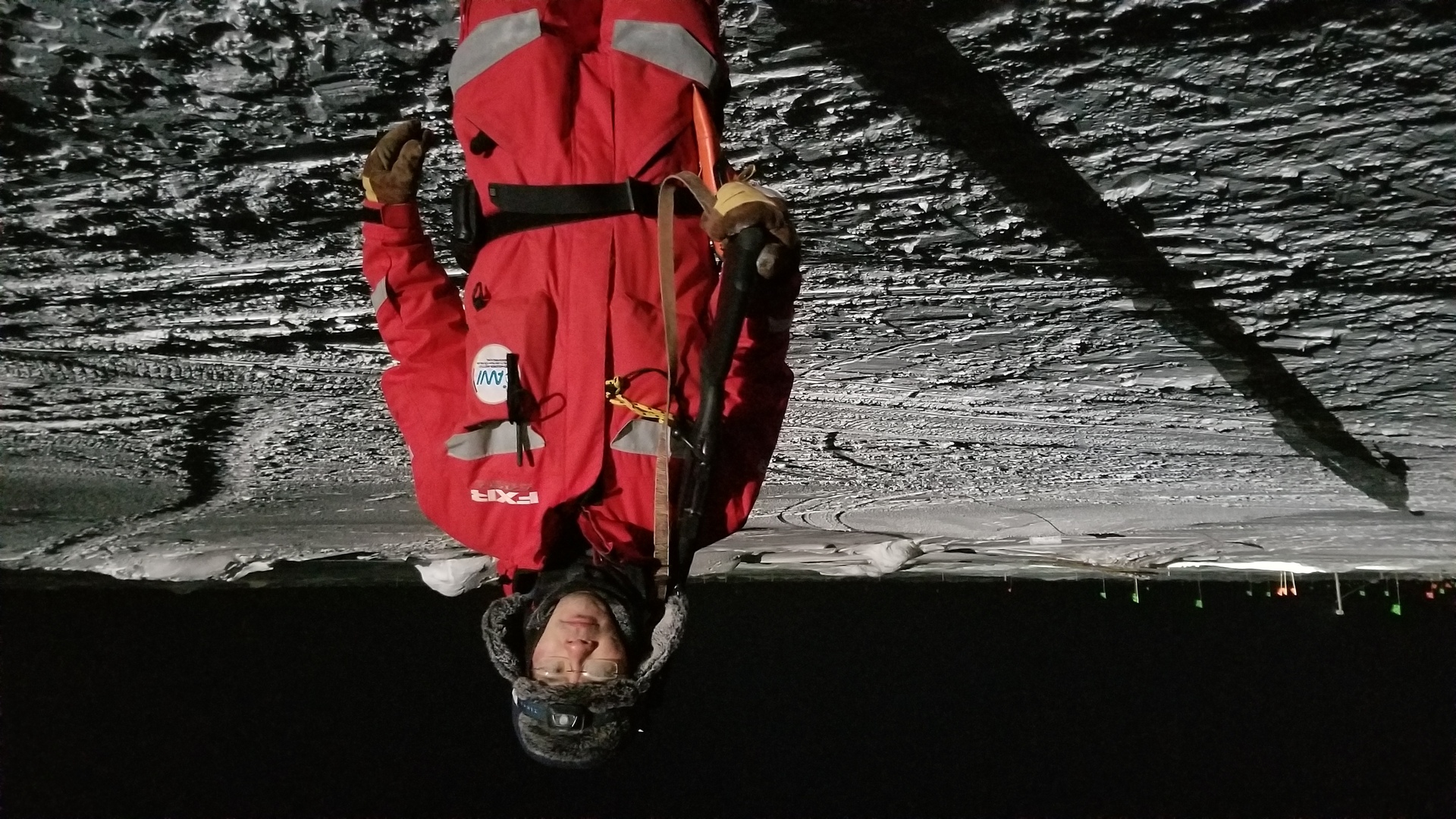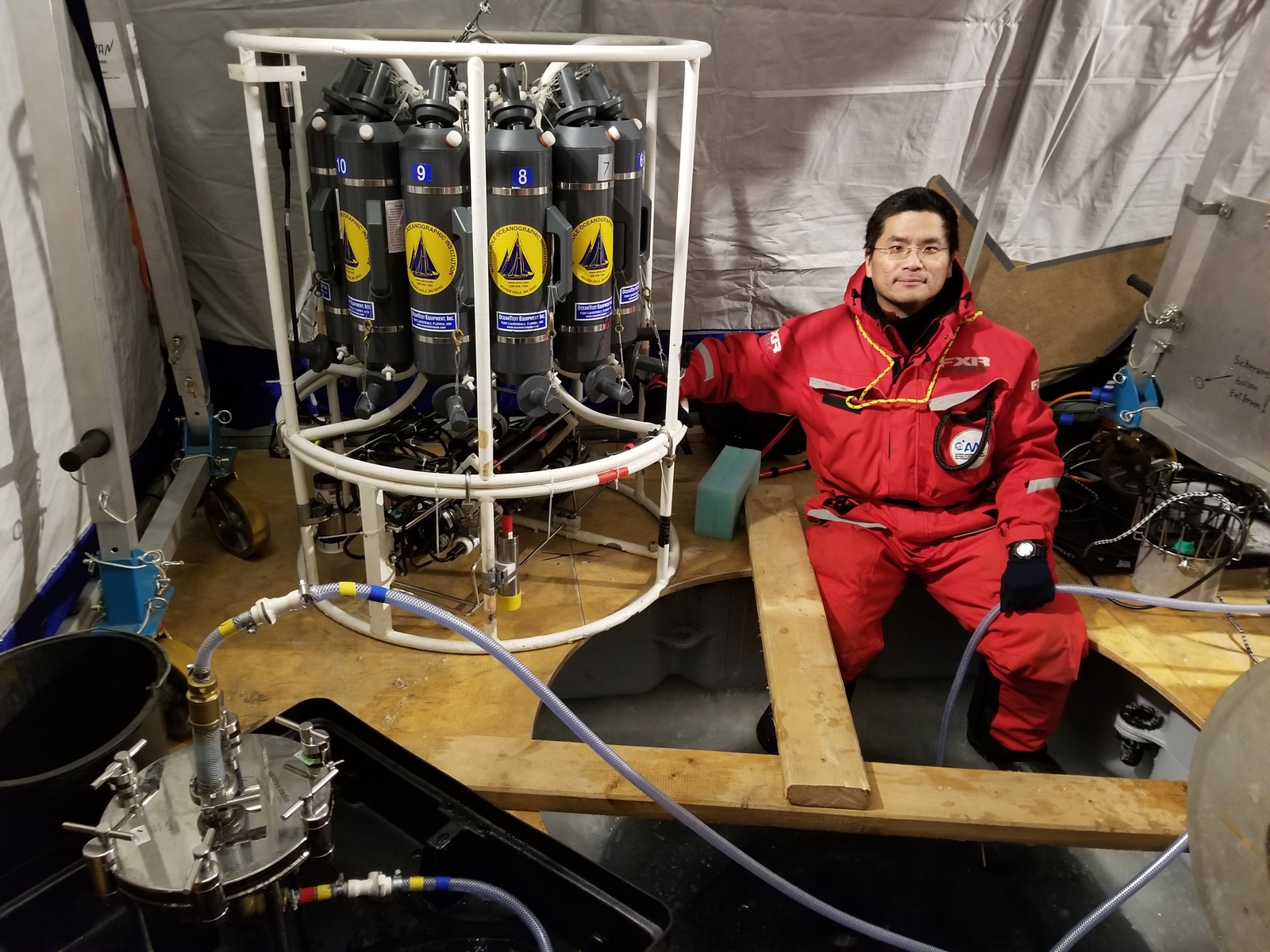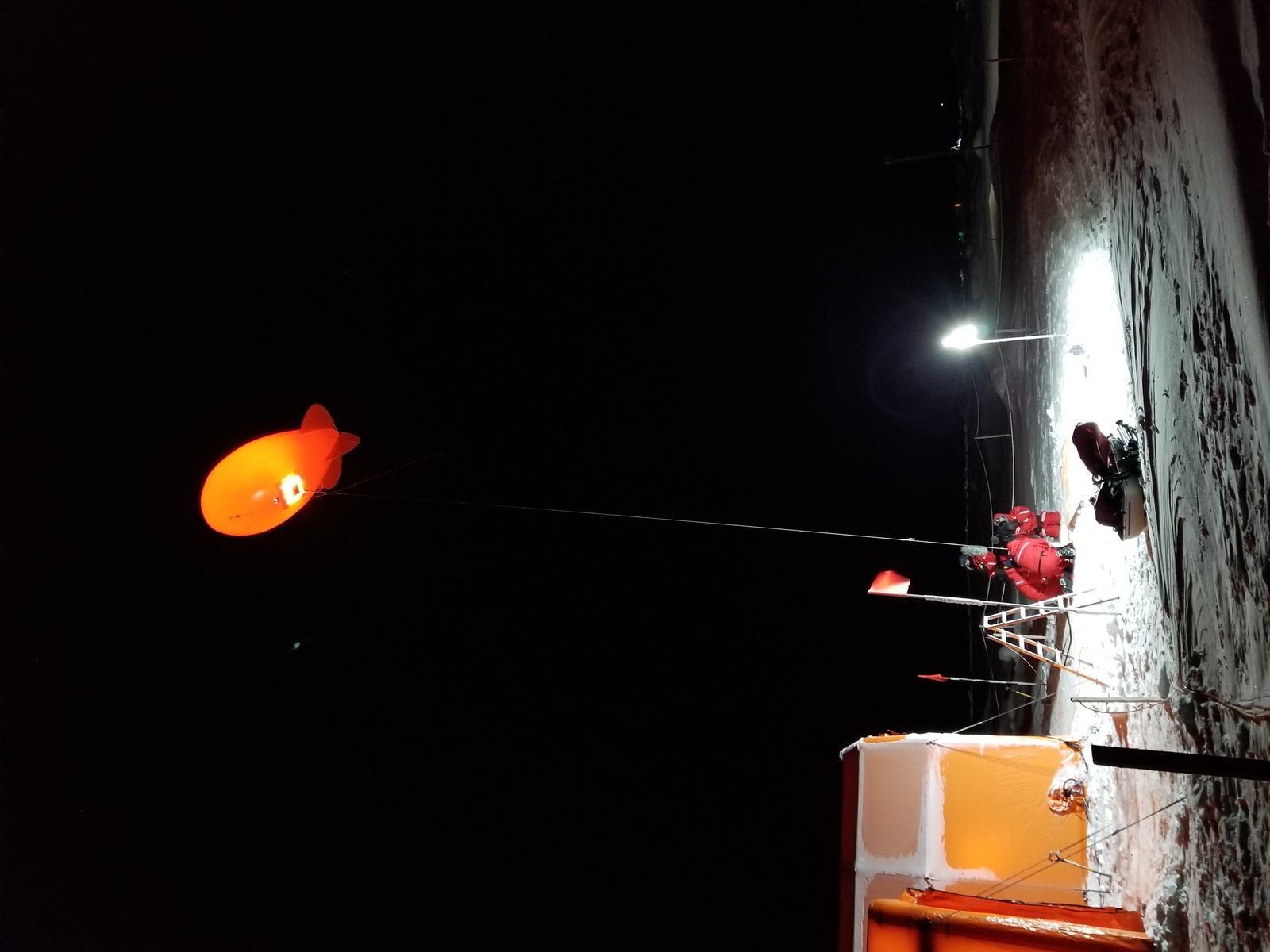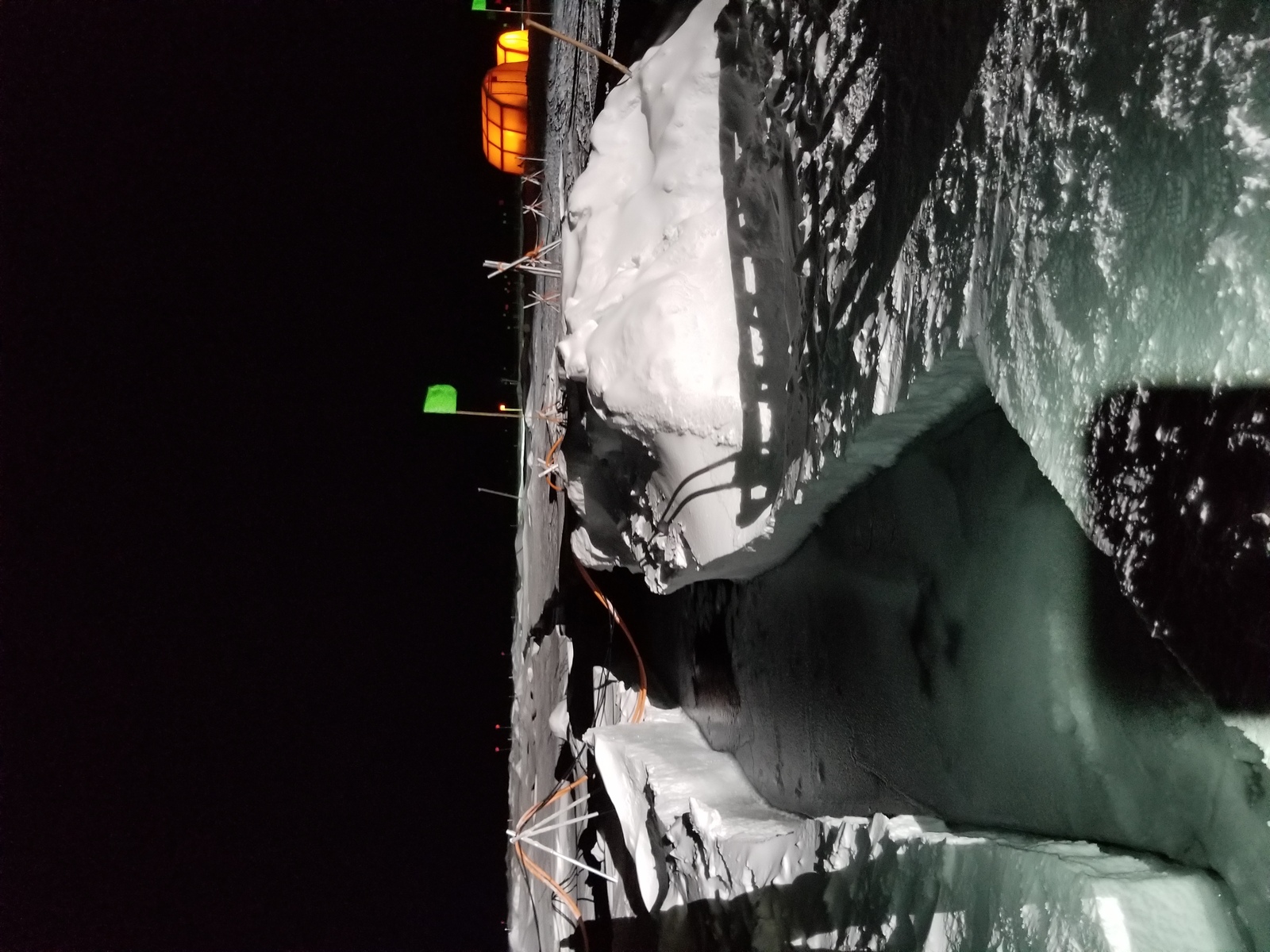A milestone achievement! Taiwanese scientist participates an Arctic expedition aboard the icebreaker R/V Polarstern, with NSYSU playing a key role






2025-02-11
The Department of Oceanography at National Sun Yat-sen University (NSYSU), in collaboration with the National Academy of Marine Research (NAMR), has been successfully evaluated by a rigorous review from Germany's Alfred Wegener Institute and received an approval of cruise proposal in the central Arctic OCean. In the summer of 2024, NAMR members represented Taiwanese team aboard the famous icebreaker "R/V Polarstern" and was involved in a multidisciplinary oceanographic expedition in the Arctic Ocean. This groundbreaking achievement marks a significant milestone in the Taiwanese oceanographic research, making a spotlight story in the mainstream media. At the heart of this extraordinary success, Assistant Professor Ying-Chih Fang of NSYSU's Department of Oceanography played a key role to make it happen.
Recalling his academic journey, Ying-Chih Fang shared that after earning his master's degree and been employed with a full-time job for three years, he pursued a PhD at the University of Alaska Fairbanks in the United States. Upon completing his doctorate degree, Fang joined the Alfred Wegener Institute in Germany to continue his academic career. During his nine years living in foreign countries, he had participated icebreaker cruises three times as part of the research team in the Arctic Ocean. He also got involved in the configuration of ocean current-measuring radars in the Alaskan indigenous villages during summer and winter seasons. His field of study—physical oceanography—and the experience in the Arctic has made him a crucial coordinator, opening a door for Taiwanese scientists and institutions to more deeply involved in the Arctic Ocean research community.
In 2021, Fang joined the faculty of the Department of Oceanography and then was invited by the expedition leader to submit a cruise proposal for the icebreaker expedition in the summer of 2024. With the generous support from the NAMR and many discussions with the panel committee of the cruise, the Alfred Wegener Institute finally approved the proposal in December 2023 after a 14-month preparation. The Taiwanese team finally secured a berth in this expedition, giving the NAMR scientist a rare opportunity to be aboard the "R/V Polarstern". Our Taiwanese scientist can now collect in situ observations and collaborate with leading Arctic scientists. This is truly a great honor for NSYSU.
As Fang reminiscing his polar research experience, he highlighted the unique aspects in the Arctic Ocean compared to mid- and low-latitude oceanography. Notably, he participated in the Multidisciplinary Drifting Observatory for the Study of Arctic Climate (MOSAiC) expedition, where he was a team leader responsible for tasks for physical oceanographic measurements. He also had analyzed data from 23 moorings deployed in the Chukchi Sea, publishing findings that addressed fundamental physical oceanography on the continental shelf and the circulation processes of low-frequency currents under local wind fields. His following work confirmed the persistent stratification in the eastern Hanna Shoal region and later completed an independent study on internal tides. His work demonstrated that during sea ice formation in winter, semidiurnal tides become the dominant physical driver, forming a tidal bottom boundary layer near the seabed and enhancing the near-bottom mixing level. These scientific accomplishments and publications have significantly approved Fang's reputation in Arctic research.
Fang also shared memorable stories from his polar experiences as follows. During the nearly 90-day Arctic expedition, scientists need to work on sea ice fitted with a heat-protected suit. They drive snowmobiles to tow sleds loaded with instruments, all in pursuit of precious winter observations. Polar bear encounter on the ice added unpredictable dangers in normal on-ice routines. Now scientists used to work in the office and lab became a life saver, carrying a rifle and a flare gun to prevent their colleagues collecting measurements on sea ice from potential polar bear attacks. "It’s an unforgettable, wonderful experience," Fang emphasized.
"It’s not just the awe and shocking of auroras and polar days and nights. Standing on ice with only 70 centimeters thick in the vast Arctic Ocean significantly underlines the ongoing global climate change. Comparing to the two-meter-thick Arctic sea ice documented in textbooks, the difference in real life is absolutely shocking," Fang noted. He also recalled his time in Alaska, where Alaskan native people shared whale meat to non-locals as hospitality. Despite it was wet, sticky, oily texture and strong odor in the whale meat, Fang happily ate the whale meat with respect and politeness.
Fang believes that his Arctic research experience offers students unique perspectives and opportunities for their academic careers. Collaborating with the world's leading scientists let him learn to be humble all the time. Fang is currently investigating the Kuroshio, but he keeps himself actively engaged with the international Arctic research community. He hopes that one day these efforts can eventually contribute to NSYSU students' participation in polar studies, with a world-wide reputation and involvement.
